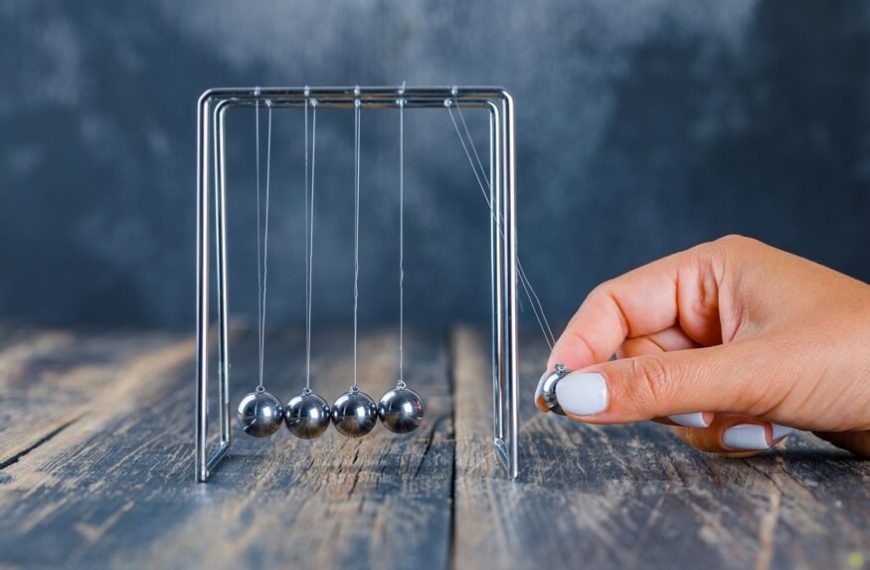Physics can be a daunting subject for many, but it doesn’t have to be! With the right approach, you can turn the study of gravity, motion, and simple machines into a delightful experience. In this article, we’ll explore engaging activities that make understanding these concepts not only educational but also incredibly fun.
Gravity Exploration: Unveiling the Force that Keeps us Grounded
Understanding Gravity: Gravity is the force that pulls objects toward each other. It’s what keeps our feet firmly on the ground and planets in orbit around the sun. Explaining this force to children may seem challenging, but with hands-on activities, the concept becomes crystal clear.
Gravity Exploration Activity 1: Falling Objects Experiment
Materials Needed: Small objects of different weights (feathers, balls, small toys), a tall box Set Up: Place the box on a table. Experiment: Drop various objects from the same height and observe which hits the ground first. Conclusion: Heavier objects fall faster due to gravity acting on them equally, regardless of their weight.
Gravity Exploration Activity 2: Gravity-Powered Races
Materials Needed: Inclined plane (ramp), small cars or balls Set Up: Create an inclined plane using a board or cardboard. Experiment: Release cars or balls at the top and observe their motion down the incline. Conclusion: Gravity accelerates objects as they move downhill, showcasing the relationship between gravity and motion.
Gravity and Motion: A Symbiotic Relationship
- Gravity and Motion Activity 1: Pendulum Painting
- Gravity and Motion Activity 2: Balloon Rocket Launch
- Simple Machines Activities: Making Physics Child’s Play
- Simple Machines Activity 1: Lever Lifting Challenge
- Simple Machines Activity 2: Pulley System Exploration
Materials Needed: String, a small weight (like a metal bolt), paint, paper Set Up: Attach the weight to one end of the string and hang it from a fixed point. Experiment: Release the weight, allowing it to swing over a piece of paper. Conclusion: The swinging motion demonstrates the combined effects of gravity and motion, creating unique patterns on the paper.
Materials Needed: Balloon, string, straw, tape Set Up: Thread a string through a straw and secure it between two points. Experiment: Inflate a balloon and attach it to the straw. Release the air, propelling the balloon along the string. Conclusion: The balloon moves due to the release of air, showcasing the interplay between motion and gravity.
Understanding Simple Machines: Simple machines are devices that make work easier by amplifying or redirecting force. Engaging in simple machine activities helps children grasp the fundamental principles behind these tools.
Materials Needed: Ruler or wooden plank, small objects of varying weights Set Up: Place the ruler or plank on a fulcrum (a point where it pivots). Experiment: Try lifting different objects using the lever. Conclusion: The lever demonstrates how a simple machine can multiply the force applied, making lifting easier.
Materials Needed: Pulleys, string, small containers or bags Set Up: Create a simple pulley system by attaching a pulley to a fixed point and threading a string through it. Experiment: Use the pulley to lift objects, exploring how it changes the effort required. Conclusion: Pulleys showcase the concept of mechanical advantage, highlighting the relationship between force and motion.
Fun Easy Physics Experiments for Young Minds
- Physics Fun Experiment 1: DIY Water Rocket Launch
- Physics Fun Experiment 2: Magnetic Madness
- Gravity Exploration: Where Everything Falls into Place
- Gravity Exploration Activity 1: Defying Gravity with Magnetism
- Gravity and Motion: A Dance of Cosmic Proportions
- Gravity and Motion Activity 1: DIY Roller Coaster Thrills
Materials Needed: Plastic bottle, water, baking soda, vinegar Set Up: Fill a plastic bottle with water, add baking soda, and attach a cork filled with vinegar to the top. Experiment: Quickly turn the bottle upside down, causing a chemical reaction that propels the rocket into the air. Conclusion: This experiment combines chemical reactions with motion, making it an exciting exploration of physics.
Materials Needed: Magnets, small metal objects Set Up: Scatter small metal objects on a table. Experiment: Use magnets to move the metal objects, exploring the invisible forces at play. Conclusion: Understanding magnetic forces introduces children to the concept of fields and interactions between objects.
Unraveling the Gravity Mystery: Gravity is the invisible force that shapes the cosmos, from the fall of an apple to the dance of celestial bodies. To make this force tangible, try the following experiment.
Materials Needed: Small magnets, paperclips, various objects Set Up: Scatter paperclips on a table. Experiment: Hold a magnet above the paperclips and observe how they seem to defy gravity by sticking to the magnet. Conclusion: Understanding that magnets can counteract gravity provides a hands-on experience of this fundamental force.
Gravity and Motion Activity 3: Orbital Artistry Materials Needed: String, small objects, a circular container Set Up: Suspend the circular container from a fixed point using string. Experiment: Release small objects into the container, observing how they orbit the center. Conclusion: This mimics the gravitational forces acting on celestial bodies, linking gravity and motion in a mesmerizing display.
Materials Needed: Cardboard, marbles, tape Set Up: Construct a simple roller coaster using cardboard and tape. Experiment: Release marbles at the top and observe the gravitational pull guiding them down the twists and turns. Conclusion: Witnessing the marbles’ motion illustrates the dynamic interplay between gravity and motion.
Physics doesn’t have to be a complex and intimidating subject. By incorporating gravity exploration, understanding the relationship between gravity and motion, and engaging in simple machine activities, children can grasp fundamental physics concepts in a fun and interactive way. The key is to turn theoretical principles into hands-on experiences that spark curiosity and a love for learning.
These fun and easy physics experiments lay the foundation for a lifelong appreciation of science. EuroKids, with its commitment to holistic learning and interactive education, aligns perfectly with this philosophy. Encouraging childrеn to еxplorе thе wondеrs of physics from a young agе sеts thе stagе for a futurе gеnеration of curious minds rеady to tacklе thе mystеriеs of thе univеrsе.
Physics is not just a subjеct to study; it’s a journеy of еxploration and discovеry that bеgins with simplе yеt captivating еxpеrimеnts. So, let’s make physics fun, engaging, and accessible for all young learners!
















